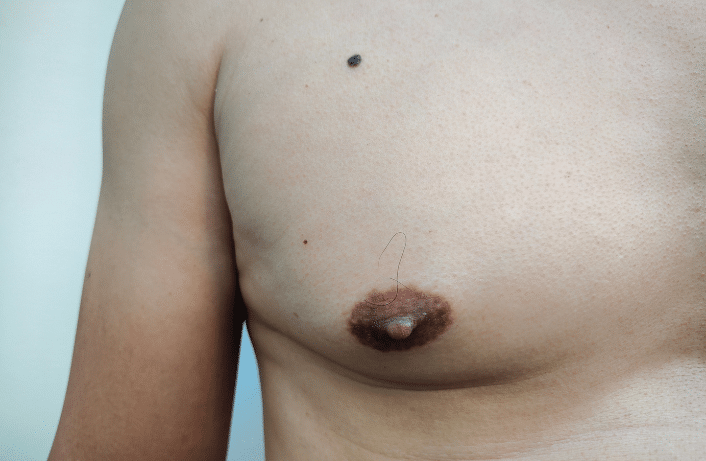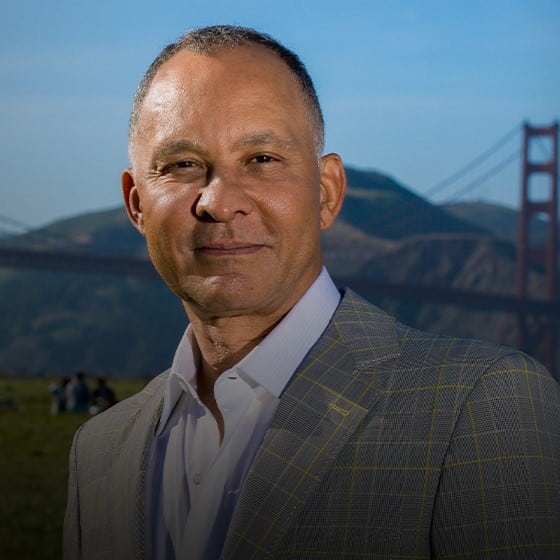Why Did the Nipple-Areola Complex Change Color After Gynecomastia Surgery?

Have you ever heard of the term “man boobs”? If so, you should know that it is referring to a condition called gynecomastia that causes males to experience excess breast tissue. Usually caused by hormonal changes, gynecomastia can affect males of all ages. In fact, according to the Cleveland Clinic[1], about 50-65% of males across the world are affected by gynecomastia. It is also important to note that gynecomastia may also be caused by the use of certain drugs, specific health conditions, and the use of anabolic steroids.
Along with enlarged male breast tissue, this condition can cause other breast changes and symptoms for some males, including:
- A lump of fatty tissue beneath the nipple-areolar complex (puffy nipples)
- Sore nipples
- Nipple pain/ discomfort
- Inverted nipples
- Nipple discharge
Thankfully, there is a plastic surgery procedure known as gynecomastia surgery that can be performed to treat gynecomastia permanently.
About Gynecomastia Surgery
Gynecomastia surgery, also called male breast reduction surgery, is an effective solution for males who are bothered by the effects of their gynecomastia. This procedure eliminates excess breast tissue, glandular tissue, and excess skin through small incisions to create a flatter, more masculine chest, which, in turn, can lead to improved self-confidence and self-esteem. Because this surgical procedure involves manipulating breast tissue, the nipple area may also be affected. One of the most common questions Dr. Delgado receives regarding the nipple following surgery relates to why the color of the areola is different. Read on to learn more about how gynecomastia surgery may affect the nipple.
Reasons the Areola May Change Color
Gynecomastia surgery often causes the areola to shrink in size. The gynecomastia breast gland causes the areola skin to be stretched. When the breast gland is removed or reduced the areola shrinks and becomes smaller in diameter. This shrinkage causes the melanocytes (the pigment of the areola, which creates the darker color) to become more concentrated and this causes a more concentrated or darker color.
Swelling and bruising directly following surgery is also not unusual, as you are experiencing many phases of the healing process. Mild to moderate bruising may cause the nipple-areola complex to temporarily appear darker in color. In some cases, one nipple may temporarily appear darker than the other.
In very rare cases, blood flow issues may be the cause of discoloration of the areolas or nipples. This risk is small for most patients and Dr. Delgado will discuss warning signs to look out for during recovery.
Overall, if you notice dark skin on your nipples following gynecomastia surgery, there is no need to be alarmed. This is normal, and depending on the cause, may resolve with time. Dr. Delgado will examine your nipples and chest during a follow-up appointment after surgery to ensure that your skin, tissue, and incisions are healing properly. It is imperative that you follow Dr. Delgado’s aftercare instructions to prevent infection, excessive bleeding, and other rare but possible complications.
Choosing Dr. Delgado for Your Gynecomastia Surgery
If you believe that you may have gynecomastia but have not been diagnosed by a healthcare provider, Dr. Delgado will be happy to assess your condition during a consultation appointment. As a skilled board-certified plastic surgeon and an expert in gynecomastia surgery, he takes care to assess each patient’s unique anatomy to create a unique surgical plan to achieve a more masculine chest appearance.
Along with male breast reduction surgery, Dr. Delgado also offers male nipple reduction surgery to reduce the size and projection of large or protruding nipples. Most men prefer only a small projection of their nipples, which can easily be achieved through surgical intervention. This procedure is a quick fix for those whose large nipples negatively affected their self-confidence.
Schedule a Gynecomastia Surgery Consultation Today
If you are tired of living with gynecomastia and have not found a treatment that works for you, surgery may be the best option. Dr. Delgado has experience treating mild to severe cases of gynecomastia and nipple concerns with optimal, natural-looking results. Whether you have excess glandular tissue, excess skin, retracted nipples, inverted nipple(s) puffy nipple(s), or more, Dr. Delgado has the expertise to help.
To learn more about gynecomastia surgery and if it is right for you, please contact Dr. Delgado today to schedule a plastic surgery consultation appointment. He offers free consultations at his Bay Area offices and also offers complimentary virtual consultations.
Gynecomastia Surgery and Nipple FAQs
Does gynecomastia increase my risk for breast cancer?
Having gynecomastia does not put men at a significantly higher risk for developing breast cancer. However, if you do have gynecomastia, it is wise to inform your primary healthcare provider so that he or she has a full picture of your health.
Why do some males with gynecomastia experience nipple discharge?
Testosterone deficiency is one of the main causes of nipple discharge in males. Fluid leaking from a male breast may be a sign of hormonal imbalance or breast cancer.
Why do some males experience nipple discomfort with gynecomastia?
Hormonal changes or imbalances can lead to sensitivity of the nipple or areola for some patients with gynecomastia. Note: if you are experiencing severe pain in your chest or nipple area, please consult your primary healthcare provider.
Can gynecomastia affect only one breast?
Yes, gynecomastia can occur in just one, or both, male breasts. One of the first signs of gynecomastia is a lump of fatty tissue under the nipple, which can cause soreness or sensitivity.
Does gynecomastia surgery involve incisions?
Yes, gynecomastia surgery will involve the creation of several small incisions in various areas of the breast. The technique used will be dependent on your individual case, the size of your breasts, the location of your nipple-areola complex, and more.
Does a male’s breasts have to be fully developed to get gynecomastia?
No, the chest does not have to be fully developed for gynecomastia to become an issue. Many males in their teens experience gynecomastia symptoms during puberty when they are still growing.
Sources:
[1] https://my.clevelandclinic.org/health/diseases/16227-enlarged-male-breast-tissue-gynecomastia

